#Gemstones in pakistan
Explore tagged Tumblr posts
Text

Pretty Open Green Tourmaline Cluster Combine With Albite And Quartz From Astaknala Mine Skardu Pakistan.
Photo 📷 hamza_minerals_collection
713 notes
·
View notes
Text
Everything You Need to Know About Crystals: Peridot
Peridot (The Tears of Pele)
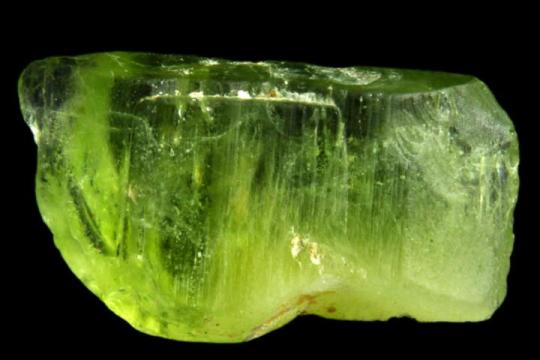
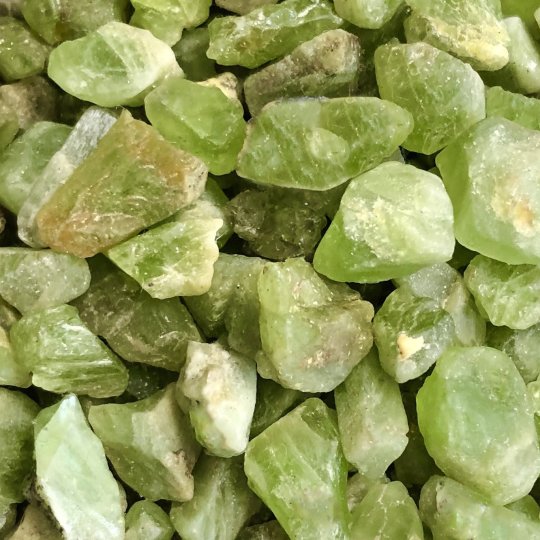
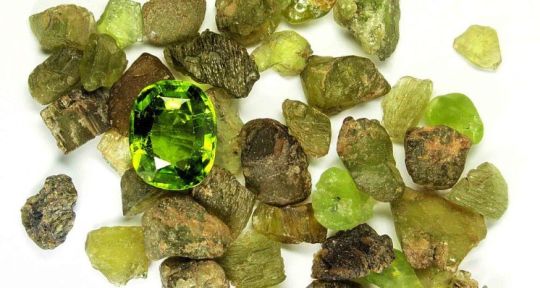
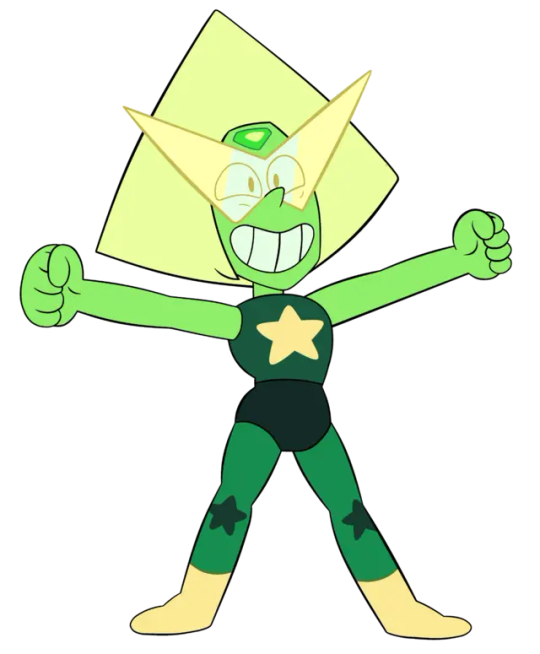
*Yes Peridot from Steven Universe is here. She demanded to be added okay!?
Color: Olive Green to Yellow-Green
Rarity: Easy to Obtain, Harder to higher quality
Hardiness: 6.5 – 7
Type: Orthorhombic (Gem form of Olivine)
Chakra Association: Heart and Solar Plexus
Angels: Achaiah or Raphael
Deities: Pele and Isis
Birthstone: August
Astrological Signs: Leo, Libra, Gemini, and Capricorn
Element: Earth
Planet: Venus and the Sun
Origin: Brazil, Hawaii, Myanmar, Egypt, Pakistan, Sri Lanka, USA
Powers: Purification, Cleansing, Wealth, Happiness, Prosperity, Protection
Crystals It Works Well With: Rutilated Quartz, Rose Quartz, Sunstone, Carnelian, Tourmaline, and Citrine
How It is Created: Peridot is the gemstone variety of olivine, a mineral made up of magnesium, iron and silicate compound. The higher proportions of magnesium and iron are used to identifying the key features in the gem, while the chromium and nickel impurities contribute to its beautiful green color. Some specimens of peridot can even appear in meteorites called pallisites and found during volcanic activity on the island of Oahu in Hawaii.
History: The Egyptians mined peridot on the island of Zebirget, which is located in the Red Sea. Egyptians used the gem for over 4,000 years and was even said to be Cleopatra’s favorite. It is regarded as a sacred stone during Medieval times and was even used in the design of the Shrine of the Three Kings in Germany. Peridot crystals found in the black volcanic sands of Hawaii are said to be the tears of the Goddess, Pele. Now most of the world’s peridot comes from Arizona or Pakistan.
What It Can Do:
Keep away evil spirits and great for protecting aura
Releases and neutralizes toxins on all levels
Purifies the subtle and physical body and mind
Opens, cleanses, and activates the heart and solar plexus chakra to release “old baggage”
Clears the feelings of burden, guilt, and obsession
Guides you to better influences
Alleviates jealousy, resentment, spite, anger and stress.
Enhances confidence and assertion without aggression
Sharpens the minds and opens it to new levels of awareness
Banishes lethargy, bringing to your attention all things you have neglected
Is said to heal and regenerate tissues and strengthen the metabolism
How to Get the Best Out Of: Peridot works best near the throat area and heart area of your body so a peridot pendant or necklace would be best.
How to Cleanse and Charge: Cleanse using smoke or running it over water. Charge it by placing it under a windowsill during a full moon.
Talisman:
Social Media Talisman
Peridot ring, worn on the hand you scroll with
Chalice
Moon water
1 small piece fresh or dried valerian root
1 fresh lemon slice
Cleanse and empower your ring with the ability to dispel feelings of envy and inadequacy.
Gather your materials in a sunny area during a waning moon.
Fill the chalice with moon water.
Take the valerian root in your hand and hold it in the direct sunlight.
Say, “Valerian root that calm sting, add self-assurance to my ring.” Visualize it absorbing the sun and pulsing with a gentle, light. Place it in the chalice.
Hold the lemon slice up to the sun, feeling the illumination and bright energy coming from it.
Say, “Bright yellow lemon with a bite, filter that which befalls my sight.”
Squeeze the lemon slice so the juice goes into the chalice.
Now the chalice holds a soothing brew imbued with calm from the valerian, confidence from sunlight, and optimistic realism from the lemon.
Put the peridot ring in the chalice and let it sit in the sun for about an hour.
Retrieve your peridot ring from the chalice and wear it. Pour the water into the earth.
The ring help ground you in reality while filtering your impressions of what you consume on social me protecting your self-confidence and dispelling any feelings of jealousy or inadequacy.
Perform this spell in direct sunlight, if possible, to illuminate the truth and soothe uncertainty. If you don’t have a chalice, use a bowl, or any kind of cup. Moon water is water that has been left outdoors under the full moon to absorb its power.
Sources
#witchblr#witch community#witchcraft#occulltism#crystals#crystal witch#paganblr#witch#witch blog#nature#rocks#peridot#olivine#minerals#uncut gems#geology#gemstones
208 notes
·
View notes
Text

Today's Specimen: Elbaite
Elbaite is a colourful tourmaline mineral that can be found throughout the United States, Brazil, Russia, Pakistan, Mozambique, Madegascar, and Afghanistan. Elbaite varies in rarity depending on the desired colour, which can be found in green, red, blue, purple, yellow, brown, and colourless. The rarest type of elbaite is Paraiba, which has a bright neon blue to green hue. Elbaite was originally discovered in 1913 in Elba, Italy, thus giving it it's name. Elbaite is a subcategory within the tourmaline classification that includes nearly all gemstone varieties of tourmaline. It has between a 7-7.5 on the Mohs hardness scale, making it a good gemstone for most jewelry. Elbaite varies in price per karat, depending on the cut and colour, but can be up to $15,000 per carat. Types of elbaite include: Rubellite (red to pink coloured), Indicolite (blue coloured), Paraiba (neon blue to green coloured), and various other multi-coloured gems.
Stay tuned for another rock talk!
#crystals#geology#minerals#rocks#rock collection#gemstone#geoscience#rock of the day#let's talk rocks#elbaite
15 notes
·
View notes
Text
Garnet Crystals on Matrix, Shigar Valley, Gilgit-Baltistan, Pakistan
https://www.oldearthminerals.com/shop/p/reddish-orange-garnets-on-matrix
#garnet #garnets #gemstones #crystals #minerals #mineralcollection #crystaltok #crystalsoftiktok
9 notes
·
View notes
Text








URWizards D&D K2 Jasper Gemstone Engraved Dice Set
"K2 Granite," also known as "K2 Jasper" and "raindrop azurite," is an extremely interesting rock and lapidary material from the Skardu area of northern Pakistan. It is like an eye magnet for anyone who sees it for the first time. It is a bright white granite that contains sharply contrasting orbs of bright blue azurite.
18 notes
·
View notes
Photo
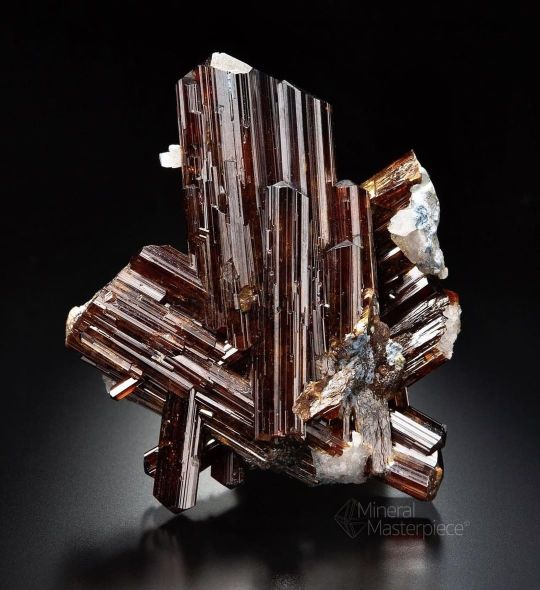
Rutile - Tormiq Valley, Pakistan -3.6cm Copyright ©️ mineralmasterpiece #smokyquartz #crystals #clearquartz #rutiledquarzt #khushalljewellery #gemstones #amethyst #khushallcrystal #rosequartz #khushallgems #amethystcrystal #tucsonshow #khushall_minerals #fadenquartz #minerals_wholesale #mineralswholesale #quartzcollecting #dubanigems #gemologist #gemmology #gems #specimen #quartzcrystal #khushallfineminerals #gemporn #rutilequartz #quartz #quartzstone #crystalporn https://www.instagram.com/p/Cp_Pe32hm5n/?igshid=NGJjMDIxMWI=
#smokyquartz#crystals#clearquartz#rutiledquarzt#khushalljewellery#gemstones#amethyst#khushallcrystal#rosequartz#khushallgems#amethystcrystal#tucsonshow#khushall_minerals#fadenquartz#minerals_wholesale#mineralswholesale#quartzcollecting#dubanigems#gemologist#gemmology#gems#specimen#quartzcrystal#khushallfineminerals#gemporn#rutilequartz#quartz#quartzstone#crystalporn
41 notes
·
View notes
Text
What are the different origins of ruby gemstone?
Ruby, the fiery king of gemstones, boasts a rich history and diverse origins. Here's an exploration of the captivating corners of the world where these precious stones are unearthed:
The Classic Source: Myanmar (Burma): For centuries, Myanmar (formerly Burma) has been the benchmark for rubies. The Mogok Valley, nestled in the country's northern mountains, is legendary. Geological conditions there created exceptional rubies known for their intense color saturation, purity, and a coveted "pigeon blood" red hue. While political unrest has limited access to these mines in recent years, some exceptional stones still emerge from this region.
The Rise of African Rubies: Africa has become a major player in the ruby market. Mines in Mozambique, Madagascar, and Tanzania are yielding impressive stones. These rubies can display a vibrant red color with a slight orange or purple undertone, distinct from the Burmese rubies. The African ruby market is known for its excellent clarity and larger gem sizes.
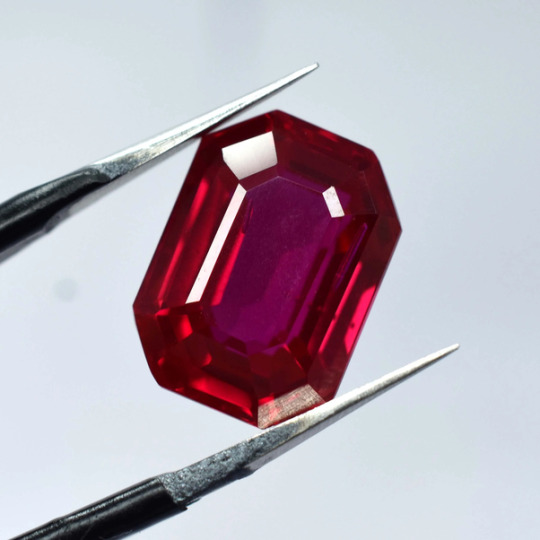
Asian Ruby Treasures: Beyond Myanmar, Asia boasts other ruby sources. Thailand, particularly the Chanthaburi province, has a long history of ruby mining. These Thai rubies often have a darker, more brownish-red hue compared to their Burmese counterparts. Sri Lanka, known for its sapphires, also produces some rubies, with a slightly pinkish tinge.
Beyond the Usual Suspects: Rubies can also be found in less common locations like Afghanistan, Pakistan, and even North Carolina in the United States. These regions typically produce smaller quantities of rubies, and the quality can vary.
Unearthing the Perfect Ruby: The origin of a ruby can influence its value and characteristics. Burmese rubies, with their legendary quality and limited availability, often command a premium price. African rubies offer a compelling alternative with their vibrant color and larger sizes.
3 notes
·
View notes
Text
Ruby: The July Birthstone

Ruby is the July birthstone. The gemstone's name comes from the Latin word "ruber," which means red. Quality rubies are rarer than diamonds with the finest stones found in Burma (Myanmar). However, they are also mined in Afghanistan, Australia, Cambodia, India, Madagascar, Malawi, Mozambique, Pakistan, Sri Lanka, Tanzania, Thailand, Vietnam, and the US.
Ruby Stone Healing Properties
Ruby gemstones are renowned for their fiery red hues and powerful energy that ignites passion, vitality, and courage within the wearer. As a stone of vitality and strength, rubies stimulate the root chakra, promoting a sense of vitality and grounding while energizing the body and mind. In addition to their physical benefits, rubies are believed to bolster emotional resilience, courage, and determination. They inspire confidence, enthusiasm, and a zest for life, empowering individuals to pursue their passions and overcome obstacles with grace and resilience.
Continue reading here.
4 notes
·
View notes
Photo
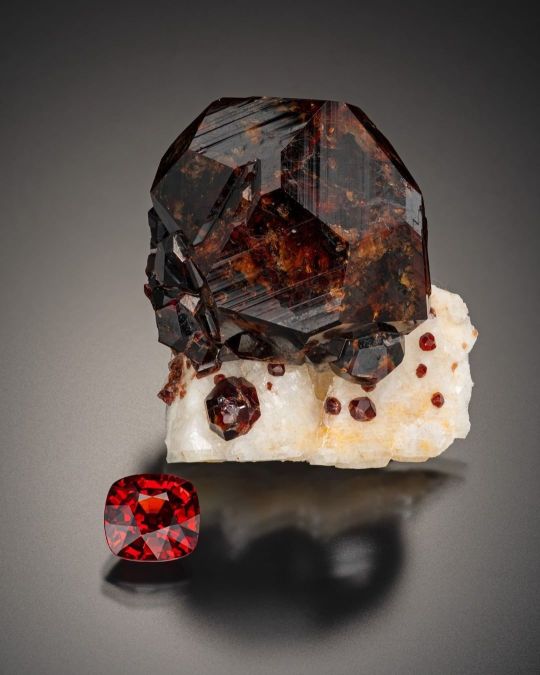
Garnet var. Spessartine - Shengus, Skardu, Gilgit Valley, Pakistan, 3.3 cm x 3.7 cm x 1.9 cm. Cut stone 6.52 carats. Jeff Scovil Photo. Donald E Ricks collection. Depending on lighting with the spessartine specimen it lights up and flashes deep orange red fire. I have been asked to display at the Denver Gem & Mineral Show this year and I’m looking forward to putting a display together. #spessartine #spessartinegarnet #garnet #garnetjewelry #geology #Crystal #gemstone #rockhounds #rockhounding #geology #geologist #gemologist #mineralshow #minerals #naturalgemstone #instacrystals #crystalshop #gemshop #crystals #gemstones #gemporn #mineralporn #crystalporn #geologyrocks #fineminerals #finegemstone #crystalline #geologypage https://www.instagram.com/p/Cp8klP4vr1e/?igshid=NGJjMDIxMWI=
#spessartine#spessartinegarnet#garnet#garnetjewelry#geology#crystal#gemstone#rockhounds#rockhounding#geologist#gemologist#mineralshow#minerals#naturalgemstone#instacrystals#crystalshop#gemshop#crystals#gemstones#gemporn#mineralporn#crystalporn#geologyrocks#fineminerals#finegemstone#crystalline#geologypage
5 notes
·
View notes
Text
Why “The Stolen Kohinoor Diamond” Won't Make An Appearance At King Charles III's Coronation
— May 4, 2023 | By Lauren Frayer

The Kohinoor diamond, set in the Maltese Cross at the front of the crown made for Britain's late Queen Mother Elizabeth, is seen on her coffin at London's Westminster Hall. Camilla, the diamond in her coronation crown, but will modify Queen Mary's crown, using diamonds from Queen Elizabeth II's personal collection. Alastair Grant/AP
LONDON — Of all the glittering British crown jewels, one will be conspicuously absent at King Charles III's coronation: the Kohinoor diamond.
Legend has it the 105-carat diamond — whose name means "mountain of light" in Persian — was found on a bank of the holy Krishna River in southern India at least 800 years ago. From there, the story goes, it spent centuries hidden inside a golden statue at a Hindu temple.
It passed through Mughal, Persian, Afghan and Sikh empires before ending up in the hands of Queen Victoria in the mid-19th century.
Along the way, people came to believe it was cursed. Calamity is said to have struck many a male royal who wore it. One strapped the diamond to his bicep. Another folded it into his turban. Most met grisly deaths — murdered, betrayed, defeated.
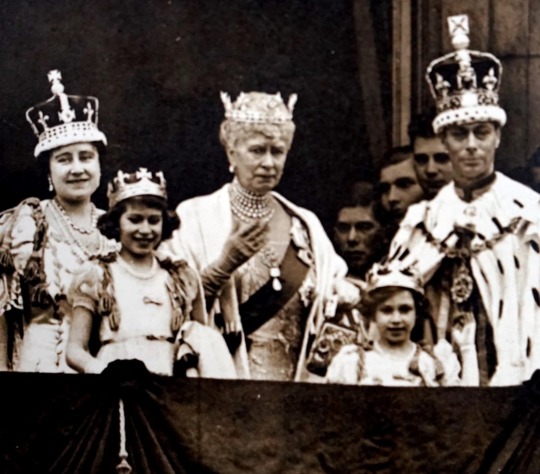
Photograph taken during the coronation of King George VI and Queen Elizabeth the Queen Mother, pictured with their children, Princesses Elizabeth and Margaret, and Queen Mary of Teck. Universal History Archive/Getty Images
So it's thought that only women — especially queen consorts — can wear the Kohinoor safely. Elizabeth, the wife of King George VI, wore it to her coronation in 1937, and again to her daughter Elizabeth II's in 1953. (There is no known record of Queen Elizabeth II wearing the diamond).
According to tradition, King Charles III's wife Camilla would be the next to wear the jewel at this weekend's coronation ceremony. But she will wear a different crown, one with 2,200 smaller diamonds.
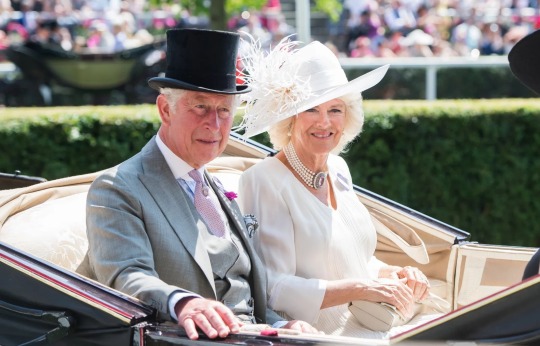
Camilla and Charles attend Royal Ascot 2017 at Ascot Racecourse. Samir Hussein/Getty Images
That's because the Kohinoor has become a focus of anti-colonial anger. India wants the diamond back.
And it's not alone. So do several other nearby countries — including Iran and Afghanistan — whose own royals and rulers, over the centuries, possessed the diamond. For now, though, the British royal family has no intention of parting with the giant gemstone.
The museum where it's kept on display, in the Tower of London, is a popular destination for South Asian tourists.
"I've learned my best swears in front of the Kohinoor, in three different languages," says historian Anita Anand, the coauthor of Kohinoor: The History of the World's Most Infamous Diamond. "Every time you bring someone over from India or Pakistan, they just swear at it! Swear at the fact that it's here."
After Queen Elizabeth died last year, the Indian government said it has repeatedly raised the issue of repatriating the Kohinoor with the British government.
And this winter, Buckingham Palace made an announcement: The royal family had decided to leave the controversial gem out of the coronation ceremony for Charles and Camilla.
For now, it remains locked in the Tower of London, advertised as a "symbol of conquest" — firmly on British soil.
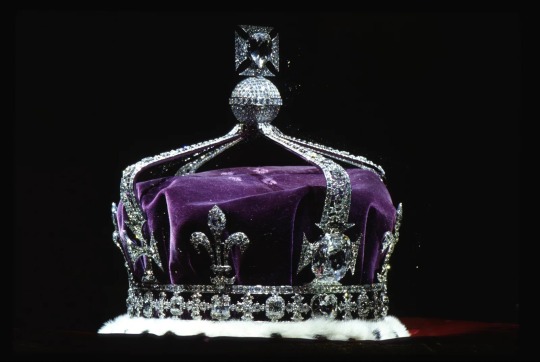
The crown of Queen Elizabeth the Queen Mother (1937), made of platinum and containing the Kohinoor diamond and other gems. Tim Graham/Getty Images
A Diamond the Size of a Coconut
Centuries before humans began mining diamonds deep underground, gems were only discovered after working their way up to the Earth's surface. And one of the places they seemed to do that most was the area of the Golconda alluvial mines, in southern India.
That's where, 800 or so years ago, someone went to take a bath in the Krishna River and apparently stumbled upon the biggest diamond then known in the world. Legend has it that it was the size of a coconut.
"People used to go to the rivers and take baths, and there were no soaps or cosmetics at the time, so they used the wet clay next to the riverbanks and applied it to their bodies," explains Mohan Devarapalli, 32, who gives Kohinoor-themed tours in southern India. "So while [collecting] the clay, they found the diamond."
They considered it a gift from the holy river and took it to their rulers, the 12th century Hindu kings of the Kakatiya dynasty. At the time, India was full of warring states, and the kings needed to keep their diamond safe.
So they hid it in plain sight — inside the eye socket of a large golden statue of the Hindu goddess Durga, in a temple that's still in use today, on the edge of a lake in the modern-day city of Warangal. One eye was glass, the other was diamond. But they looked identical.
"One of the [goddess'] eyes was the diamond, which no one knew — except the kings — because it looked like glass. Even the priests, they would not have known it," Devarapalli says. "It was a top-secret place to hide the diamond."
It worked — for a couple of centuries, at least.
The Diamond Becomes an Object of Violent Conquest
Rumors spread about this giant diamond guarded by a goddess. And when the Kakatiya dynasty was vanquished, around the 14th century, invaders from the north pillaged all the temples in the region and captured the gemstone.
"It's the nearest thing to the ring of power in Lord of the Rings. Whenever it goes, it stirs up anger, greed, murder and bloodshed!" says historian William Dalrymple, Anand's coauthor.
Experts have confirmed from the diamond's geology that it did come from the Golconda area of southern India.
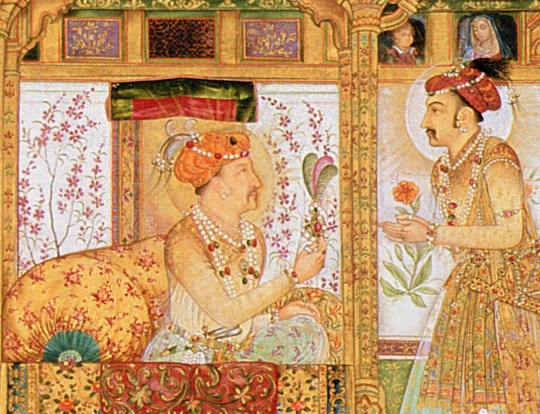
The opulence of Shah Jahan's court was a marvel in 17th century India. The Mughal emperor embedded the Kohinoor diamond in the Peacock Throne, his seat of power. Pictures from History/Getty Images
"But beyond that, its history is enormously disputed," Dalrymple says. "There's almost no record of it until it's on the top of the Peacock Throne, which is built in the 1640s by Shah Jahan, who's the same guy who built the Taj Mahal."
By the 17th century, much of India had been conquered by Muslim emperors, known as the Mughals. One of them, Shah Jahan, embedded the diamond in the Peacock Throne, his seat of power — which eventually was captured by another warlord with a weakness for diamonds.
"An Iranian leader called Nadir Shah defeats the enormous Mughal army. From Iran, [the diamond] then enters the hands of Ahmad Shah Abdali, who is the founder of Afghanistan," Dalrymple explains. "So the Afghans feel equally strongly that this is their stone."
Around this time, the diamond came be known as the Kohinoor. It was also around this time when legends of curses started to mount.
"In Indian astrology, a pure man without sin — a great man — can wear a diamond without a problem. But anyone who is flawed, or any diamond which is flawed, can bring terrific bad luck," Dalrymple says. "This whole mythology of cursed diamonds actually begins in Indian astrological texts."
By the time the British arrived on the scene — first as the East India Company in the 17th century, and then as colonial rulers — the diamond was only worn by women.
That suited Queen Victoria just fine.
A Colonial Gift For Queen Victoria
In the mid-19th century, British diplomats befriended a 10-year-old Punjabi Sikh prince, the Maharaja Duleep Singh, who'd inherited the Kohinoor. They took the boy's diamond as part of an 1849 treaty marking the end of the second Anglo-Sikh war — and presented it to Queen Victoria. She wore it in a dangling bracelet, and later had a giant brooch made to hold the diamond, which she wore to sit for a famous portrait.
That loss of the Kohinoor is still felt — memorialized — in India to this day.

Ruins of the historic Golconda Fort on the outskirts of Hyderabad in southern India. Experts have confirmed that the Koh-i-noor diamond came from the Golconda area. Majority World/Universal Images Group/Getty Images
In a sound-and-light show for tourists at the 11th century Golconda Fort in the southern city of Hyderabad, where the Kakatiya kings once ruled, the recorded voice of Bollywood's biggest star, Amitabh Bachchan, extolls the Kohinoor's brilliance and bemoans where it is today.
"The Kohinoor is still in Britain. This is just a replica," Bachchan's voice bellows in the darkness, as a giant hologram of a diamond is projected onto one of the fort's walls.
Tourists shake their heads.
"The British never apologized about anything," says Saudamini Sharma, 25, touring the fort. "They're the ones who came and tried to, you know, quote unquote 'civilize people.' But civilized people don't steal — don't take away stuff and never return it."
India's Claim To The Kohinoor
There are growing calls to return the Kohinoor. But to where? Over the centuries, it's been held in what is now India, Pakistan, Iran and Bangladesh. Even the Taliban claim it's theirs.
From the return of Jewish art looted by the Nazis to colonial artifacts in British museums, Western governments in recent years have started to address questions of ownership of archaeological and cultural heritage. A London museum recently returned the Benin Bronzes to Nigeria. Greece is asking the British Museum to return the Elgin Marbles.

Benin Bronzes are displayed in Berlin in 2022. Germany returned 22 of the looted objects to Nigeria in December. A London museum is also returning Benin Bronzes. Michael Sohn/AP
But the U.K. government and royals have rarely commented on the Kohinoor. In 2010, then-Prime Minister David Cameron, asked about it on a trip to India, said returning the diamond would set a dangerous precedent for British institutions.
"What tends to happen with these questions is that if you say yes to one, you suddenly find the British Museum would be empty!" Cameron told New Delhi Television. "I think I am afraid to say, to disappoint all your viewers, it is going to have to stay put."
Meanwhile, the British sell tickets (currently, about $37 for adults) to see the Kohinoor — and have done so since 1851, when the diamond was the star attraction at the World Exhibition at the Crystal Palace in London.
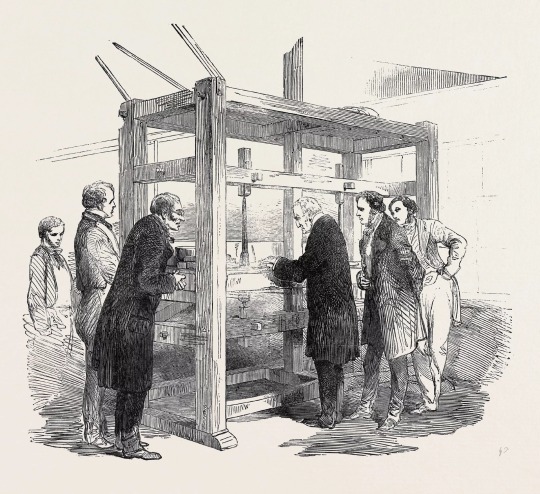
Re-cutting the Koh-i-Noor diamond, 1852. Universal History Archive/Getty Images
It was for that exhibition that the British royals had the diamond cut down — lopped off at least 85 carats. The diamond had already been whittled down from its legendary coconut size over the centuries, as part of efforts to eliminate imperfections or possibly even steal parts of it. In Victorian Britain, the taste was for "brilliant" cut diamonds, which required a reshaping of the gem to refract more light.
"To Indians, it's actually a perfect, perfect metaphor for what India went through: It was reshaped and re-cut and diminished into something that suited a British palate and British needs," Anand says.
"We [in Britain] don't really learn about the history of empire! It's painted as if it's something very long ago, not really interesting — and yet it shapes the world we live in today," Anand says. "It's always glimmered in my life. If you are a British Asian, you know about the Kohinoor."
Last year, India and Pakistan celebrated 75 years since winning their freedom from the British crown. But for many, the story is incomplete as long as the British crown still has their diamond.
— NPR.Org
3 notes
·
View notes
Text

Exceptional Huge Purple Blue Color Change Phantom Fluorite From Loralai Mine Baluchistan Pakistan.
Photo ©️ Hamza Gems Minerals
479 notes
·
View notes
Text
3 notes
·
View notes
Text
8.39 Carat Certified Natural Yellow Topaz Gemstone

The Yellow Topaz Gemstone is a beautiful stone that has been used for thousands of years. It's believed to bring good luck, prosperity and happiness to the wearer. Yellow Topaz Gemstones are mined in Brazil, India, Madagascar and Pakistan. The physical properties of the gemstone are as follows: - Color: The color of this gemstone is yellow. It has a warm, golden glow that's similar to the sun's rays. - Clarity: This gemstone has a clarity rating (very very slightly included). This means that there are only a few small inclusions visible under 10x magnification. - Cut: The cut is round brilliant cut which gives off maximum sparkle! You can see how beautiful it looks by looking at our pictures below! - Carat Weight: 8.39 carats total weight with no additional treatments done to them other than cutting into shapes like hearts or ovals etc.. The chemical composition of this gemstone is SiO2, or silica dioxide. This means that it is a mineral with a chemical formula consisting of silicon and oxygen atoms. The origin of this stone is Brazil and it has been cut into an octahedron shape by hand. Its structure is hexagonal, which means that there are six faces on each side and eight vertices (or corners). It also has a Mohs hardness rating of 8-9 out of 10, making it very durable! Healing Properties - Psychological Yellow Topaz is a stone that brings clarity and enhances the mind. It helps you to think clearly and make decisions with confidence. Yellow Topaz can help you to overcome negative thinking patterns, allowing you to see the positive side of things in life. And then Yellow Topaz also encourages optimism, making it easier for you to look forward rather than back at past mistakes or failures. - Physical The healing properties of yellow topaz include boosting immunity, strengthening bones and muscles, improving eyesight (especially night vision), detoxification of the body by removing toxins through urine/stool excretion or sweating during exercise/workout sessions etc., reduction in blood pressure levels due to reduced stress levels after wearing this is regularly over time period ranging from few weeks up until months depending on how much time one spends wearing jewelry made out from natural materials like wood or stones instead plastic materials which cannot be recycled easily unlike metals like gold & silver etc.. Read the full article
2 notes
·
View notes
Text
Two Piece Katlang Mine Pink Imperial Topaz Crystals. $36 plus shipping.
From: Katlang, Mardan District, Khyber Province, Afghanistan
https://www.oldearthminerals.com/shop/p/facet-grade-pink-katlang-topaz-crystal-lot-pakistan-gfhr8k
#katlangtopaz #pinktopaz #topazcrystal #crystals #crystalsofig #minerals #gemstone #gemstones #rawgemstones #crystaltok #crystalsoftiktok
3 notes
·
View notes
Text
Metaphysical Healing Properties Of K2

Metaphysical Healing Properties Of K2
Introduction
Metaphysical Healing Properties Of K2, The K2 stone, also known as "K2 Jasper" or "K2 Granite," is a unique and visually striking gemstone composed of white granite with bright blue spots of azurite. Found near the base of the K2 mountain (the second tallest mountain in the world, located in Pakistan), this stone has gained popularity in metaphysical and spiritual communities for its reputed properties as a catalyst for change. What is K2 Stone? K2 stone is a rare combination of two distinct minerals: - Granite: The white-gray base of the stone, which is composed of quartz, feldspar, and other minerals, provides grounding energy. - Azurite: The vibrant blue spots are caused by azurite, a copper-based mineral that is associated with intuition and spiritual insight. This combination of grounding granite and intuitive azurite makes the K2 stone a unique tool for both physical and spiritual transformation. 1. Transformation and Personal Empowerment - Catalyst for Change: K2 is believed to carry the energy of monumental challenges and triumphs. Its vibration can encourage you to face obstacles head-on and transform adversity into personal growth. Working with this energy may help you tap into your inner strength and resilience. - Empowerment: The forceful, majestic energy of K2 supports the empowerment of your inner self. It can inspire courage, motivate action, and help you break through self-imposed limitations—ideal for those seeking to redefine their life’s purpose. 2. Grounding and Connection to Nature - Deep Grounding: As a symbol of towering mountains, K2 is associated with the grounding energies of the Earth. Meditating with or visualizing its energy can help you feel more rooted, centered, and connected to the natural world, which is especially beneficial during times of stress or upheaval. - Connection to Primal Energy: K2’s energy is often seen as a bridge between the physical and spiritual realms. By tapping into this energy, you may experience a renewed sense of connection to the raw, untamed forces of nature—reminding you that you are a part of a larger, dynamic whole. 3. Clarity, Focus, and Inner Wisdom - Mental Clarity: The powerful, expansive energy of K2 is said to clear mental fog, helping you gain perspective on life’s challenges. This clarity can support decision-making and enable you to approach problems with a calm, centered mind. - Heightened Intuition: K2 is sometimes used in meditative practices to enhance intuitive abilities. Its vibration may help open channels to your inner wisdom, guiding you through periods of transformation and encouraging insights into your life’s deeper purpose. 4. Energy Alignment and Chakra Balancing - Balancing Energetic Centers: Practitioners who work with K2’s energy often report a harmonizing effect on the body’s energy centers (chakras). Its grounding and transformative qualities can help align and balance the lower chakras, fostering stability while opening up channels for higher consciousness. - Dynamic Energy Flow: K2’s vibration is sometimes used to stimulate and energize the subtle energy systems. This dynamic flow of energy may help clear blockages, allowing for a freer, more balanced exchange between your physical, emotional, and spiritual aspects. 5. Working with K2 Energy - Meditative Practices: To harness K2’s energy, incorporate visualizations into your meditation where you imagine the majestic, towering energy of a mountain peak. Visualize its solid, grounding presence and let it infuse you with strength and clarity. - Crystals and Tools: While there isn’t a specific “K2 crystal” universally recognized, you might pair the symbolism of K2 with grounding stones like smoky quartz, black tourmaline, or hematite. These crystals can support the grounding, transformative, and protective qualities associated with K2 energy. - Respect and Mindfulness: Given its powerful nature, working with K2 energy is best approached with respect and mindfulness. Allow its intensity to guide you gently rather than forcing change. Creating a ritual that honors this energy—perhaps with a dedicated altar, grounding meditation, or journaling—can help integrate its benefits into your daily life. Comclusion Whether you’re working with a crystal imbued with the energy of K2 or using the mountain’s symbolism to guide your meditation, the metaphysical properties of K2 offer a powerful tool for transformation, grounding, and personal empowerment. By tapping into this potent energy, you may find yourself better equipped to face life’s challenges, gain clarity and focus, and emerge stronger and more aligned with your true purpose. Embrace the journey with openness and patience, and allow the profound energies of K2 to support your path toward deeper self-awareness and spiritual evolution. K2 Stone as a Catalyst for Change In spiritual practices, the K2 stone is often regarded as a powerful catalyst for change due to its unique energetic properties. Here's how it is believed to facilitate growth and transformation: - Balancing Earthly and Spiritual Energies The grounding energy of granite helps individuals stay rooted and stable, even as they explore higher spiritual planes through the azurite's connection to intuition and insight. This balance makes it an ideal stone for those seeking to make meaningful changes in both their material and spiritual lives. - Encouraging Self-Awareness K2 stone is thought to help users gain a deeper understanding of their emotions, thoughts, and patterns. By fostering self-awareness, it can serve as a tool for identifying areas of life that need transformation and help individuals take proactive steps toward change. - Enhancing Communication and Clarity Azurite is often associated with the third eye chakra, which governs intuition and clarity. This aspect of the K2 stone is believed to improve communication (both with others and within oneself), allowing users to better articulate their goals and understand the steps needed to achieve them. - Facilitating Emotional Healing The stone is said to assist in releasing emotional blockages and old patterns that no longer serve the individual. By letting go of past burdens, users can embrace new opportunities and create the conditions for personal growth. - Promoting Courage and Adaptability The grounding energy of granite provides strength and resilience, helping individuals face challenges and embrace change with courage. This makes the K2 stone a great companion for those navigating big life transitions, such as career changes, new relationships, or spiritual awakenings. How to Use K2 Stone for Change Here are some practical ways to use the K2 stone as a catalyst for transformation: - Meditation: Hold the stone during meditation to connect with its grounding and intuitive energies. Focus on your intentions for change and visualize the desired outcome. - Chakra Work: Place the stone on the third eye chakra to enhance intuition or on the root chakra to deepen grounding and stability. - Carry It With You: Keep the stone in your pocket or as jewelry to promote balance and clarity throughout the day. - Journaling: Use the stone as a tool during self-reflection. Write down areas of your life you want to transform and let the stone’s energy inspire action. Conclusion The K2 stone is a fascinating and rare gemstone that combines grounding and intuitive energies, making it a powerful catalyst for change. By helping individuals balance their physical and spiritual needs, gain clarity, and release old patterns, the K2 stone can empower transformative growth. Whether you're navigating a major life shift or seeking personal evolution, this unique stone may offer the support and inspiration you need. How K2 Stone Promotes Personal Empowerment - Balancing Earthly and Spiritual Energies The K2 stone is known for its ability to harmonize the physical and spiritual realms. The grounding properties of granite help stabilize emotions and provide a sense of calm, while the celestial qualities of azurite enhance intuition and spiritual awareness. This balance allows individuals to feel rooted in their daily lives while pursuing higher goals and aspirations. - Strengthening Personal Will and Resilience K2 stone is often described as a talisman of strength and personal will. It aligns the physical body with the ethereal nervous system, empowering individuals to push their limits and overcome challenges. This makes it an excellent companion for those seeking to break free from self-doubt and embrace their inner strength. - Enhancing Clarity and Intuition The azurite in K2 stone is associated with the third eye chakra, which governs intuition and insight. By working with this stone, individuals can gain clarity about their life path and make decisions with confidence. It also helps attune users to ancient wisdom, enhancing their personal understanding and empowering them to trust their inner voice. - Promoting Emotional Healing and Balance K2 stone is said to stabilize emotions, helping individuals release fear, anxiety, and self-limiting beliefs. This emotional balance creates a foundation for personal growth and empowerment, allowing users to move forward with a sense of calm and purpose. - Setting Intentions and Manifesting Dreams During meditation or therapeutic sessions, K2 stone can be programmed with specific intentions. By focusing on personal goals and dreams while holding the stone, individuals can channel its energy to support their aspirations and manifest the life they envision. Practical Ways to Use K2 Stone for Empowerment - Meditation: Hold the stone during meditation to connect with its grounding and intuitive energies. Focus on your intentions for personal growth and empowerment. - Chakra Work: Place the stone on the third eye chakra to enhance intuition or on the root chakra to deepen grounding and stability. - Daily Carry: Keep the stone in your pocket or wear it as jewelry to maintain a sense of balance and empowerment throughout the day. - Affirmations: Use the stone while reciting affirmations related to strength, clarity, and personal growth to amplify their impact. Conclusion The K2 stone is a remarkable tool for personal empowerment, offering a unique blend of grounding and spiritual energies. By stabilizing emotions, enhancing intuition, and strengthening personal will, it helps individuals overcome challenges and embrace their true potential. Whether used in meditation, chakra work, or daily life, the K2 stone can inspire transformative growth and empower you to live authentically and confidently. Deep Grounding Using K2 Stone The K2 stone, Its grounding properties, derived from granite, make it an excellent tool for achieving deep stability and calmness, while the azurite inclusions enhance spiritual awareness and intuition. This duality makes the K2 stone a powerful ally for those seeking to ground themselves deeply while maintaining a connection to higher consciousness. How K2 Stone Facilitates Deep Grounding - Grounding Through Granite The granite component of the K2 stone is known for its stabilizing and grounding energy. Granite helps anchor you to the Earth, promoting a sense of security and balance. This grounding effect is particularly beneficial for those who feel scattered, overwhelmed, or disconnected from their physical surroundings. - Calming the Mind and Body Holding the K2 stone during meditation or moments of stress can help clear distracting thoughts and induce a state of calmness. Its energy encourages deep breathing and relaxation, which are essential for grounding practices. - Balancing Emotional Energy The K2 stone is said to promote emotional stability by harmonizing the mind and body. This balance allows you to release anxiety and fear, creating a foundation for inner peace and resilience. - Connecting to the Present Moment Grounding is about being fully present in the here and now, and the K2 stone excels at helping individuals achieve this state. By combining the grounding energy of granite with the intuitive qualities of azurite, it helps you stay rooted in the present while maintaining clarity and focus. Practical Ways to Use K2 Stone for Grounding - Meditation - Hold the K2 stone in your less dominant hand during meditation to connect with its grounding energy. Focus on your breath and visualize roots extending from your body into the Earth, anchoring you deeply. - Create a sacred, clutter-free space for meditation to enhance the stone's effects. - Breathing Exercises - While holding the stone, practice deep breathing. Inhale for a count of four, hold for four, and exhale for four. This practice, combined with the stone's energy, can help calm your mind and ground your body. - Daily Carry - Keep the K2 stone in your pocket or wear it as jewelry to maintain a sense of grounding throughout the day. Its energy can help you stay balanced and focused, even in stressful situations. - Grounding Rituals - Use the K2 stone during grounding rituals, such as walking barefoot on the Earth or journaling about your intentions. The stone's energy can amplify your connection to the Earth and help you feel more centered. Why K2 Stone is Unique for Grounding Unlike other grounding stones, the K2 stone offers a dual benefit: it grounds you deeply through its granite component while simultaneously enhancing spiritual awareness through azurite. This combination makes it ideal for those who want to stay rooted in the physical world while exploring higher consciousness. It bridges the gap between the material and spiritual realms, making it a versatile tool for grounding and personal growth. Conclusion The K2 stone is a powerful grounding tool that combines the stabilizing energy of granite with the intuitive qualities of azurite. By promoting calmness, emotional balance, and a connection to the present moment, it helps individuals achieve deep grounding while maintaining spiritual clarity. Whether used in meditation, daily life, or grounding rituals, the K2 stone can provide the stability and focus needed to navigate life's challenges with confidence and peace. Connection to Primal Energy Using K2 Stone The K2 stone, a rare and visually striking combination of white granite and blue azurite, is renowned for its ability to bridge the physical and spiritual realms. While it is not directly associated with the concept of "primal energy" as described in fantasy or magical lore, the K2 stone is believed to help individuals connect with their core essence—a grounding and empowering force that can be likened to primal energy in a metaphysical sense. This connection allows users to tap into their innate strength, wisdom, and spiritual awareness. What is Primal Energy? In a metaphysical context, primal energy refers to the raw, foundational force that underpins existence. It is often associated with the Earth’s natural energy, the life force within all living beings, and the deep, instinctual power that drives creation and transformation. Connecting to primal energy involves grounding oneself in the present moment while accessing the ancient, universal energy that flows through all things.The K2 stone, with its unique combination of grounding granite and intuitive azurite, is an ideal tool for fostering this connection. Its energy is said to help individuals align with their inner power while maintaining a sense of stability and balance. How K2 Stone Facilitates a Connection to Primal Energy - Grounding Through Granite The granite component of the K2 stone provides a strong grounding energy, anchoring individuals to the Earth and helping them feel stable and secure. This grounding effect is essential for connecting to primal energy, as it allows users to tap into the Earth's natural vibrations and align with their core essence. - Awakening Intuition Through Azurite The azurite inclusions in the K2 stone are associated with the third eye chakra, which governs intuition and spiritual insight. This aspect of the stone helps users access deeper layers of consciousness and connect with the universal energy that flows through all living things. - Balancing Earthly and Spiritual Energies The K2 stone is unique in its ability to harmonize the physical and spiritual realms. By grounding the body while simultaneously enhancing spiritual awareness, it creates a synergy that allows individuals to connect with primal energy in a balanced and sustainable way. - Releasing Blockages The K2 stone is believed to help release mental, physical, and spiritual blockages, clearing the path for a deeper connection to primal energy. By removing these obstacles, it enables users to access their innate power and align with their true purpose. - Amplifying Energy Flow The stone is said to enhance energy flow through all the chakras, creating a harmonious connection between the body and the Earth. This amplification of energy helps users feel more attuned to their primal instincts and the natural rhythms of life. Practical Ways to Use K2 Stone for Connecting to Primal Energy - Meditation - Hold the K2 stone during meditation to ground yourself and focus on your connection to the Earth. Visualize the stone’s energy flowing through your body, linking you to the primal force of nature. - Place the stone on your root chakra to deepen your connection to the Earth’s energy or on your third eye chakra to enhance spiritual awareness. - Nature Walks - Carry the K2 stone with you during walks in nature to amplify your connection to the Earth’s primal energy. Focus on the sensations of the ground beneath your feet and the natural world around you. - Energy Work - Use the K2 stone in energy healing practices to balance your chakras and align with your core essence. Its grounding and intuitive properties make it an excellent tool for channeling primal energy. - Journaling and Reflection - Hold the K2 stone while journaling about your connection to the Earth and your inner power. Reflect on ways to align with your primal instincts and embrace your authentic self. Conclusion The K2 stone is a powerful tool for connecting to primal energy, offering a unique combination of grounding and spiritual properties. By anchoring individuals to the Earth while enhancing their intuition and energy flow, it helps users tap into their core essence and align with the universal life force. Whether used in meditation, nature walks, or energy work, the K2 stone can inspire a deeper connection to the primal energy that drives transformation and growth. How K2 Stone Enhances Mental Clarity The K2 stone, is celebrated for its ability to enhance mental clarity and focus. Its grounding and intuitive properties make it a powerful tool for clearing mental fog, improving decision-making, and fostering a balanced state of mind. By harmonizing the physical and spiritual realms, the K2 stone helps users achieve a sense of clarity and purpose in their thoughts. Enhancing Mental Clarity - Clearing Mental Blockages The K2 stone is believed to release mental, physical, and spiritual blockages, allowing for a freer flow of thoughts and ideas. Read the full article
#altarguide#alternativehealing#aromatherapy#astrology#chakra#clairvoyant#clarity#Cleansing#cleansingcrystals#conscious#courage#crystalballs#crystalgemstones#crystalgrids#crystalhealing#crystallove#crystalmagic#crystalreiki#crystalshop#crystalshops#crystalstore#crystaltarot#crystalsandstones#crystalsbyrob#crystalsforsale#divination#divinationtools#energyhealer#energyhealing#esotericshop
0 notes
Text
Peridot Realities: The Gemstone of Light and Restoration
Peridot, a striking green gemstone, is one of a handful of the pearls shaped profound inside the World's mantle and brought to the surface by volcanic movement. Dissimilar to most diamonds, its particular green variety stays consistent, unaffected by changes in lighting. Peridot is the birthstone for August and represents thriving, insurance, and reestablishment. Antiquated Egyptians considered it the "pearl of the sun," accepting it had supernatural abilities. It has been tracked down in shooting stars, making it one of the uncommon gemstones of extraterrestrial beginning. By and large, peridot was frequently confused with emeralds, remembering those for Cleopatra's renowned assortment. The best peridot comes from sources like Myanmar, Pakistan, and even Hawaii. With a Mohs hardness of 6.5-7, it's sturdy however expects care to keep away from scratches. Whether worn for its excellence or accepted supernatural properties, peridot stays an intriguing and cherished gemstone with a rich history and divine associations.

0 notes